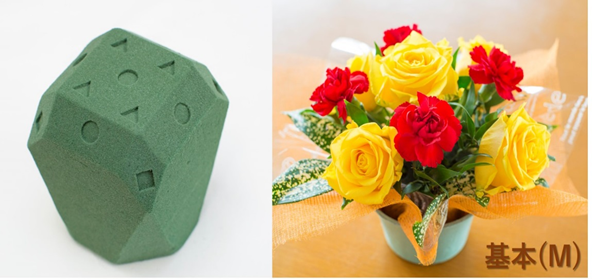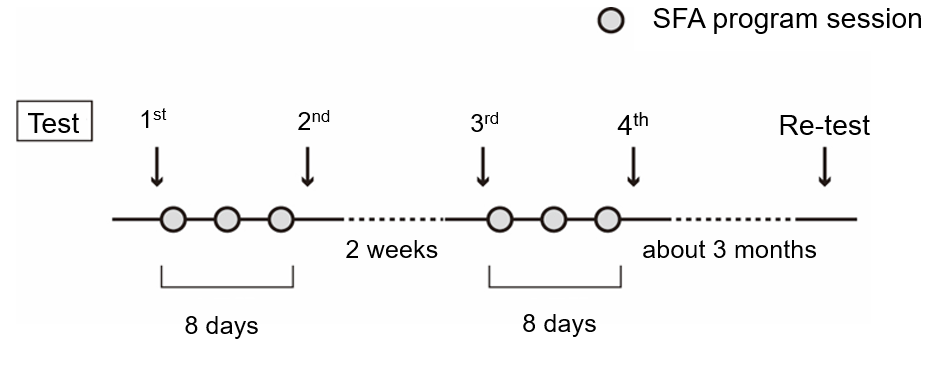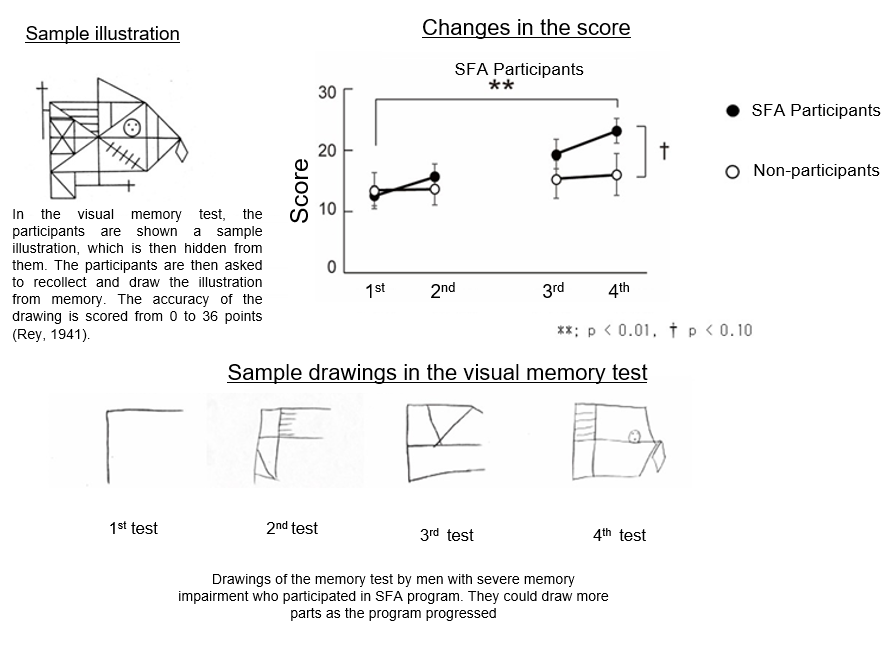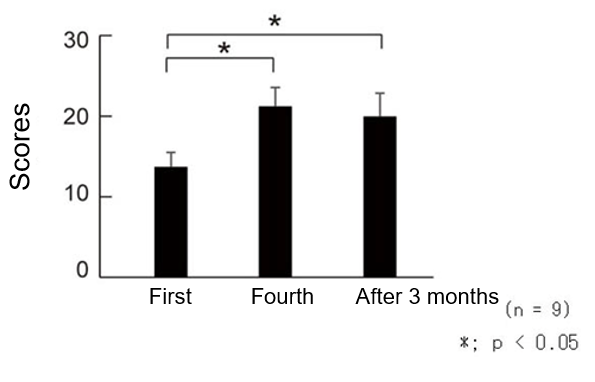A cognitive function training using flower arrangement conducted by NARO, in collaboration with the Ibaraki Prefectural University of Health Sciences, has shown that the memory ability of patients who suffer from cognitive dysfunctions due to accidents, stroke etc. improved, and the effect was observed for 3 months after the training. It is expected to be utilized for cognitive rehabilitation of patients with neurocognitive disorder.
Overview
According to the 2016 survey of the Ministry of Health, Labor and Welfare survey, it is estimated that 327,000 people suffer from higher brain dysfunction nationwide. Cognitive rehabilitation will play an important role for patients with high brain dysfunction to lead a self-sustaining and social life.
In 2010, NARO and Ibaraki Prefectural University of Health Sciences have developed the structured floral arrangement (SFA) program to improve cognitive functions by means of flower arrangement. In the SFA program, the user will insert the flower material in order of the mark of ○ or △ attached to the water absorbing sponge, and create a flower arrangement similar to solving a puzzle.
As a result of clinical research for participants with neurocognitive disorder, among 16 participants of the SFA program, the memory test score improved significantly with an average of 12.7 to 23.3, and the score increased by more than 40% as compared to the non-participating group. In addition, nine of the 16 follow-up participants maintained the improvement in test results even after 3 months. Hence the SFA program is expected to be effective as a cognitive rehabilitation method for patients with neurocognitive disorder.
The marked sponge material used for the SFA program can be purchased for 200 yen from flower shops throughout Japan and via the Internet.
Publication
Mochizuki-Kawai H., Kotani I., Mochizuki S., Yamakawa Y. (2018) Structured floral arrangement program benefits in patients with neurocognitive disorder. Frontiers in Psychology, 9, 1328, 10.3389/fpsyg.2018.01328.
Reference Information

Fig. 1 A sponge with mark (left) and a sample of floral arrangement (right) for creating basic design
Yellow roses are placed on ○ marks in the sponge and red carnations are placed on the △ marks. Each mark corresponds to the type of cut flower used as a flower material. The participant inserts cut flowers into the marks and creates a flower arrangement according to the order shown in the instruction sheet. In the case of the basic design with a standard difficulty level, the participant could complete the flower arrangement in about 10 minutes.

Fig. 2. Experiment schedule of the SFA program and visual memory test
The SFA program is divided into 2 phases with 3 sessions in phase 1, 3 sessions in phase 2, an a 2-week interval between sessions. Visual memory tests were conducted four times before and after each phase of the program. (Modified by Mochizuki-Kawai et al. 2018).

Fig. 3. Changes in results of visual memory test (Rey complex figure)
(Modified by Mochizuki-Kawai et al. 2018)

Fig. 4. Results of the first and fourth visual memory test, and visual memory test after three months.
(Modified by Mochizuki-Kawai et al. 2018)





